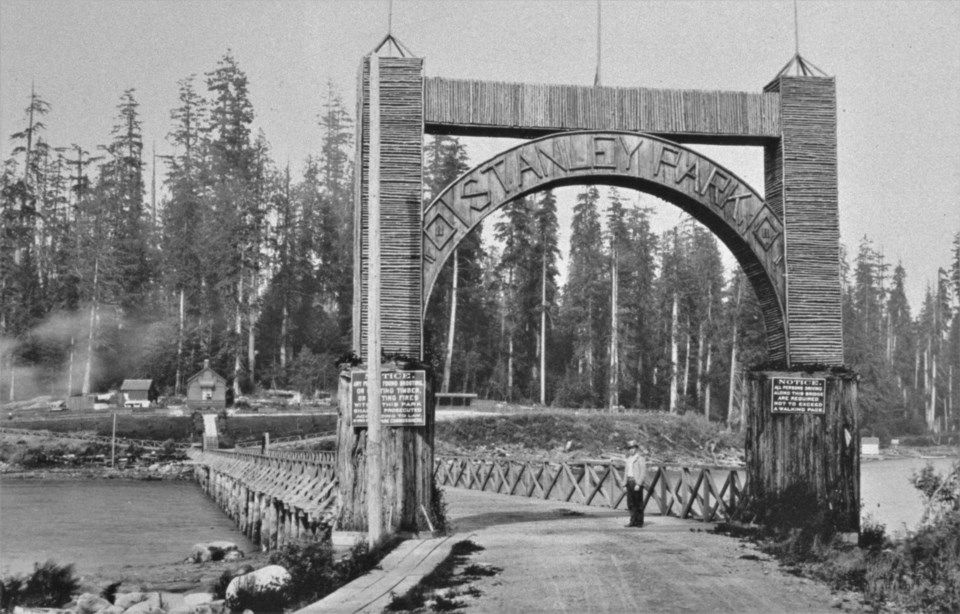Stanley Park is arguably the original Vancouver tourist attraction.
Founded in 1888, it's actually named after the same man that the Stanley Cup gets its name from: Lord Stanley. His full name was Frederick Arthur Stanley, 16th Earl of Derby and he was the Governor General of Canada in 1888.
Prior to it being a park, the land was home to two different First Nations villages, which were there up until they were moved to make way for the park.
To be fair, there are lots of facts about Stanley Park, from the creatures that live there to its presidential memorial (it's not for the president you are probably thinking of) to its big old wooden entrance.
1. It was heavily logged
While it's famous for the dense forest that exists now, not all of it is old-growth. Six different companies had logging rights there before it was named a park in 1888 and logging was big business in Vancouver's early days. They took down many large trees.
That said, not everything was cut down, and some old trees remain.
2. The 9 O'Clock Gun was stolen once
The longtime cannon on Brockton Point is actually older than the park, having been created in 1816.
It wasn't installed at the park until 1898, but in the last 125 years, it's had more adventures than most stationary cannons.
Notably, in 1969, UBC engineers absconded with the heavy gun. It was returned, but the park board took the opportunity to restrengthen its mount, resulting in weeks of silence at Brockton Point.
The 9 O'Clock Gun has also been struck by lightning. In June of 1960, a lightning strike caused it to fire five hours early during a storm.
3. Someone lives there
There is exactly one legal residence in Stanley Park where one couple lives. They are caretakers for a few things at the park and have lived there for three decades.
4. The grey squirrels were introduced
There are a lot of invasive grey squirrels in the park, and that is sort of on purpose. They're from the east.
There are two local squirrel species living in Stanley Park (they're Douglas and the northern flying squirrels), but they aren't very friendly.
Around 1909, the park board was looking to bring more animals to the park. According to the city, the original grey squirrels "are said" to have been a gift from New York's mayor of the time.
Newspaper articles from the period show the park board was looking to acquire some of the friendly squirrels from the east and inquired with folks in Baltimore and other places.
5. The original road around Stanley Park used shells from a midden
When Stanley Park was created by the government of the day, it wasn't an empty forest. Two First Nations villages were active (Xwayxway and Chaythoos) and there was a long history of people living on that land, which meant there was a large midden.
In 1888, the Indigenous locals were moved off the land by the settler government to make way for a new road around the park.
Instead of preserving the historic site, engineers decided to use the shells and other materials in the midden to create the roadbed for the new Park Road.



